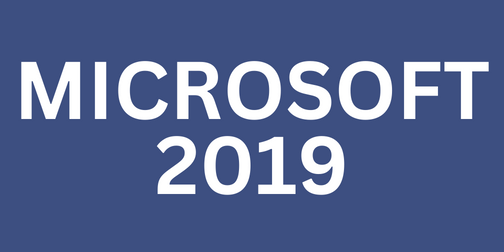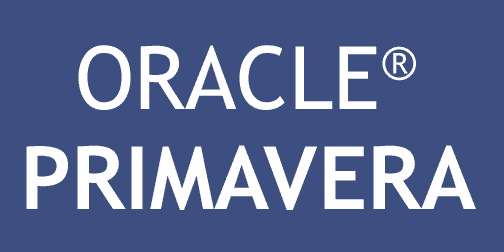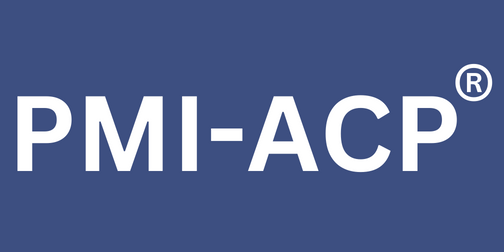.png)
ITIL 4 VS ITIL V3: What's Changed and Why It Matters
Posted On May 3, 2024 - 15:39 PM
ITIL, which stands for Information Technology Infrastructure Library, is a set of best practices for IT service management (ITSM) that helps build IT services to the needs of the business. It provides details for firms to identify, plan, deliver, and support IT services.
By offering a useful and adaptable digital operational model, ITIL 4 is intended to assist enterprises in adjusting to the digital disruption and emerging technologies associated with the Fourth Industrial Revolution. In the changing modern world, ITIL 4 is a vital tool for enterprises and IT workers as it reflects changes in corporate culture, fosters collaboration and offers a sophisticated approach to managing IT services13.
Changes that took place in ITIL4 compared to ITIL V3
-
Service Value System (SVS): ITIL 4 includes the Service Value System concept, highlighting the interdependence of all components involved in value generation. This comprehensive approach replaces the ITIL V3 benefit lifecycle worldview.
-
Guiding Principles: Seven guiding principles are introduced in ITIL 4 to help a company adopt and modify ITIL best practices. These rules allow businesses to customize ITIL implementations to meet their prerequisites.
-
Service Value Chain: ITIL 4 introduces the Service Value Chain, which outlines an organization's activities to enable value creation through its services. This replaces the process-focused approach of ITIL V3.
-
Four Dimensions Model: The Four Measurements Show, which is presented in ITIL 4, highlights the requirements for organizations and individuals, data and innovation, accomplices and value streams, and procedures that must all be taken into account in any service management endeavor.
-
Practices: ITIL V3 forms differ from those extended by ITIL 4. Thirteen common administration hones, seventeen benefit administration hones, and three specialized administration hones are among the 34 hones that are presented.
-
Continual Improvement: Nonstop change is given more weight in ITIL 4, which coordinates it over the full SVS and benefit esteem chain.
Changes to ITIL Core Publications
Several noteworthy modifications are brought about by the switch from ITIL V3 to ITIL 4, which reflects a change in mindset and approach rather than a major alteration in the library's substance.
ITIL V3 Core Publications
-
The benefit lifecycle, comprising five stages—service strategy, benefit plan, benefit exchange, benefit operation, and continuous benefit improvement—was created by ITIL V3, commonly referred to as ITIL 2011.
-
It included 26 methods organized according to the service lifecycle model.
-
The system emphasized moving client fulfillment forward by arranging high-quality administrations at a reasonable cost.
ITIL 4 Core Publications
-
The Benefit Esteem Framework (SVS), presented in ITIL 4, may represent the interrelated parts and activities of the company that collaborate to enable value creation through IT-enabled services.
-
ITIL 4 emphasizes value streams, value co-creation, and the benefit value chain, which reflects a modern emphasis on value and cooperation.
-
The word "processes" has given way to "practices," highlighting teamwork in responding to requests and finishing tasks.
-
Continual Service Change is replaced by Continual Change, which offers an organized strategy for implementing improvements at different corporate levels.
-
The four Dimensions of Benefits Administration in ITIL 4 have taken the put of the four Ps of Benefits Plan in ITIL V3, advancing a comprehensive approach to benefits administration.
-
Seven guiding principles are included in ITIL 4, encouraging automation, agility, optimization, and value co-creation.
Reasons for the ITIL 4 Update
The transition from ITIL V3 to ITIL 4 was prompted by several important reasons that represented the changing demands and difficulties that companies face in the digital age:
Arrangement with modern Hones:
Agile, DevOps, and Lean strategies are among the better approaches to working that ITIL 4 was revised to accommodate. Organizations can more effortlessly join ITIL with their general company methodology and forms since this arrangement.
Value Co-Creation:
As benefit administration approaches ended up more customer-focused and collaborative, ITIL 4 puts a greater emphasis on the thought of value co-creation. This modification recognizes the importance of customer involvement and satisfaction within the current trade environment.
Adjustment to Digital Change:
This upgrade talks about how benefit administration will be influenced by advanced change. ITIL 4 offers administration rules for developing technologies, like automation, manufactured insights, and cloud computing, which are basic to arranging advanced IT administrations.
All-encompassing See of Benefits Administration:
ITIL 4 advances a more all-encompassing approach to benefit administration by presenting the Benefit Esteem Framework (SVS) and the Benefits Value Chain. This strategy recognizes how different parts of an organization are interrelated and contribute to value advancement.
Flexibility and Adaptability:
ITIL 4 expands adaptability and flexibility, empowering undertakings to alter ITIL methods to meet interesting requirements and situations. This adaptability is vital in a company environment that's changing rapidly, where reaction and agility are basic.
Emphasis on Continuous Enhancement:
The upgrade encourages enterprises to grasp a continuous upgrade and optimization culture by highlighting nonstop enhancement as a vital component of the benefits administration handle.
Benefits of Adopting ITIL 4
Adopting ITIL 4 can provide several key benefits to organizations, including:
Alignment with Modern Processes: ITIL 4 facilitates an easier integration of ITIL with an organization's entire business strategy and processes by aligning with contemporary practices like Agile, DevOps, and Lean. This connection fosters greater agility and reactivity to shifting business and technological environments.
Focus on Value: Value Co-creation is given more weight in ITIL 4, ensuring that IT services are developed and provided with an eye on optimizing value for service providers and customers. By doing this, businesses can better satisfy their stakeholders' and consumers' demands and expectations.
Holistic Approach: By highlighting the interconnectedness of various organizational components, ITIL 4's Service Value System (SVS) and Service Value Chain encourage a more holistic approach to service management. By adopting this comprehensive viewpoint, organizations can better comprehend and maximize the value-generation process.
Flexibility and Scalability: ITIL 4 provides increased scalability and flexibility, enabling enterprises to modify ITIL procedures to meet their unique requirements and environments. This flexibility is necessary in a company environment that is changing quickly, where response and agility are critical.
Continual Improvement: ITIL 4 strongly emphasizes continuous improvement as a crucial component of the service management procedure. By adopting a continuous improvement and optimization culture, organizations can increase the efficacy and efficiency of their IT services.
Improved Customer Experience: By providing services that are more closely aligned with customer wants and expectations, ITIL 4 can assist enterprises in improving the customer experience through its emphasis on value co-creation and continuous improvement.
Improved Integration of New Technologies: Cloud, automation, and artificial intelligence are just a few new technologies for which ITIL 4 offers management guidelines. These technologies are becoming essential to the modern IT service delivery process. As a result, businesses can successfully incorporate these technologies into their service management procedures.
Increased Collaboration and Communication: By emphasizing value co-creation and implementing ITIL 4's guiding principles, organizational teams can better collaborate and communicate with one another, resulting in more effective and efficient service delivery.
Key Considerations When Upgrading to ITIL 4
To guarantee a smooth transition and optimize the advantages of the revised framework, firms implementing an ITIL 4 upgrade should consider several crucial factors. Among the critical factors are:
-
Evaluation of Current Practices: Determine where ITIL 4 alignments and gaps exist in IT service management procedures and practices. Preparing for the shift begins with a solid understanding of the situation.
- Training and Education: Invest in IT teams' and pertinent stakeholders' training and education to guarantee that they fully comprehend the modifications made to ITIL 4. This will support the effective implementation of the new practices and principles.
- Engage Stakeholders: To raise awareness and garner support for the switch to ITIL 4, engage with important stakeholders throughout the company. Business executives, IT personnel, and end consumers who use IT services may fall under this category.
- Tailoring and Customization: Recognize that ITIL 4 is intended to be flexible and adjustable. Consider how to modify the framework while upholding the fundamentals of ITIL 4 to suit the particular requirements and organizational context.
- Measurement and Metrics: Establish metrics and key performance indicators (KPIs) that support ITIL 4's goals. Provide a framework for evaluating the change's effects and the new practices' continued efficacy.
- Technology Enablement: Examine how technology can facilitate and assist the implementation of ITIL 4. This involves assessing IT service management solutions that adhere to ITIL 4 standards and guidelines.
- Continual Improvement: Stress the significance of continuous improvement as a fundamental tenet of ITIL 4. Promote an environment where the company's IT service management procedures are always improved and optimized.
- Knowledge Documentation and Sharing: To promote a shared understanding of the new framework and its implementation, make sure that best practices and knowledge are recorded and disseminated throughout the organization.
Conclusion
The shift from ITIL V3 to ITIL 4 signifies a noteworthy advancement in IT service management best practices. A more comprehensive and adaptable framework that aligns with current business and technological developments is introduced by the ITIL 4 upgrade. Adopting ITIL 4 can help organizations focus on value co-creation, embrace continuous improvement, and increase agility and cooperation. However, a smooth transition to ITIL 4 necessitates a thorough evaluation of present procedures, stakeholder involvement, customized execution, and an emphasis on technology enablement, training, and change management. Organizations can successfully transition to ITIL 4 and position themselves to provide IT services that are closely connected with business objectives and customer expectations by considering these important elements.


















